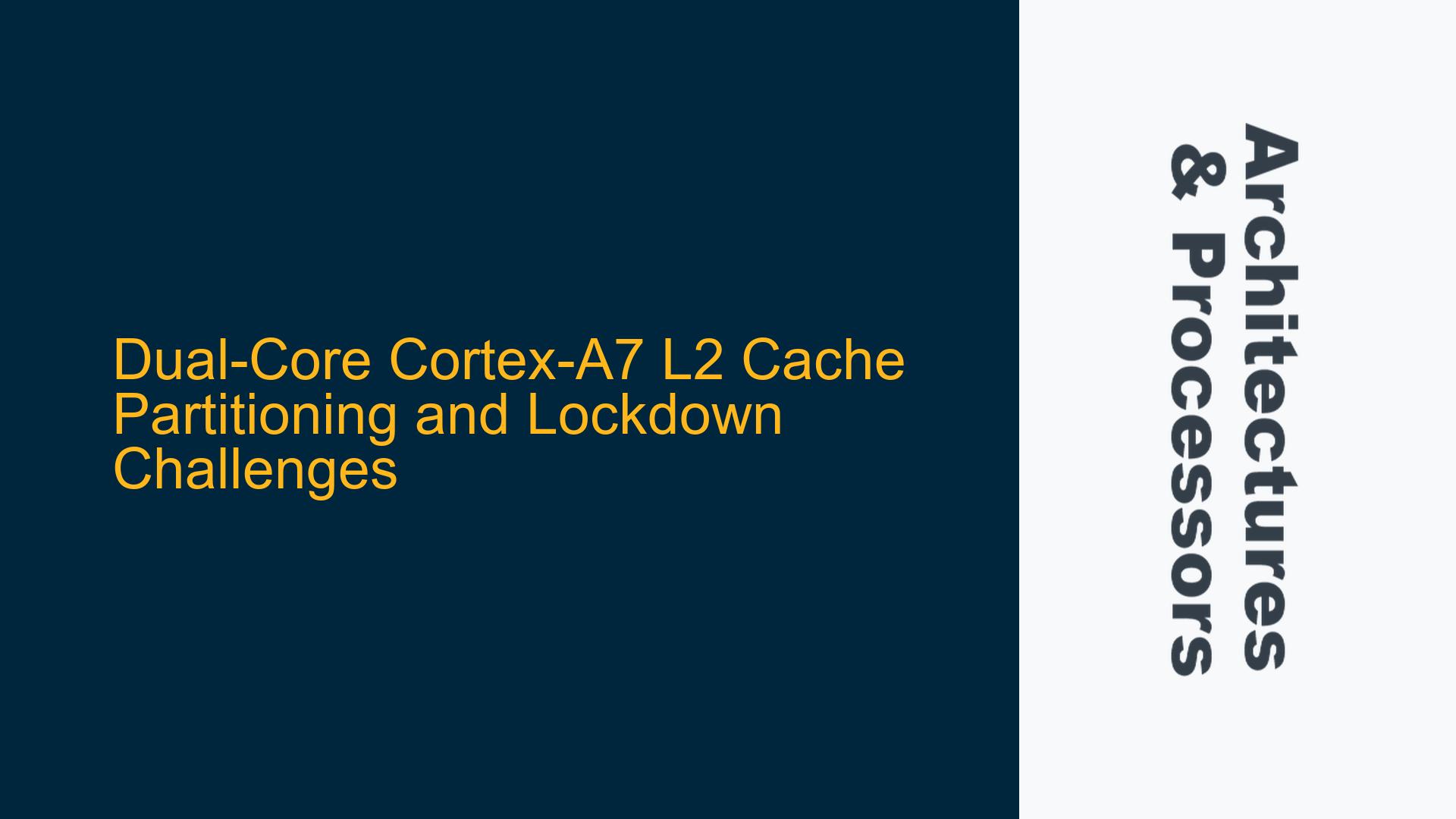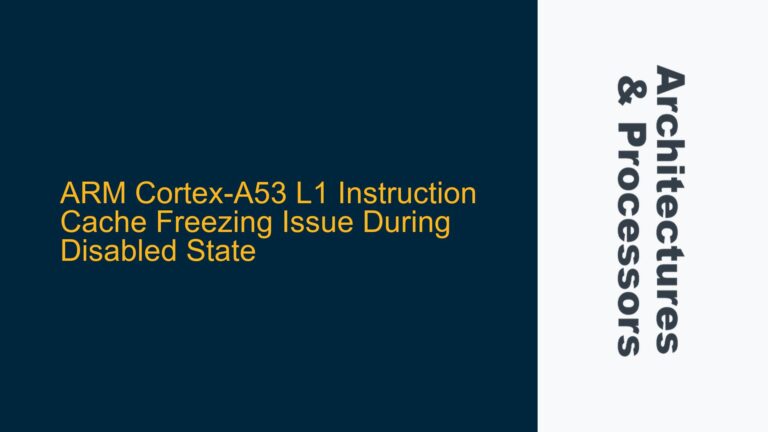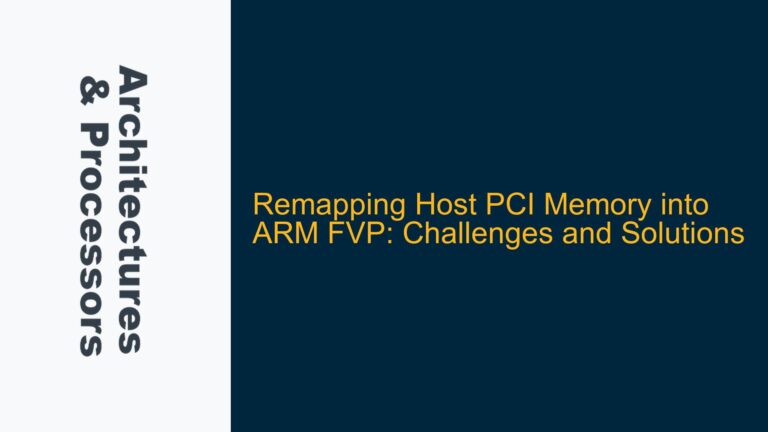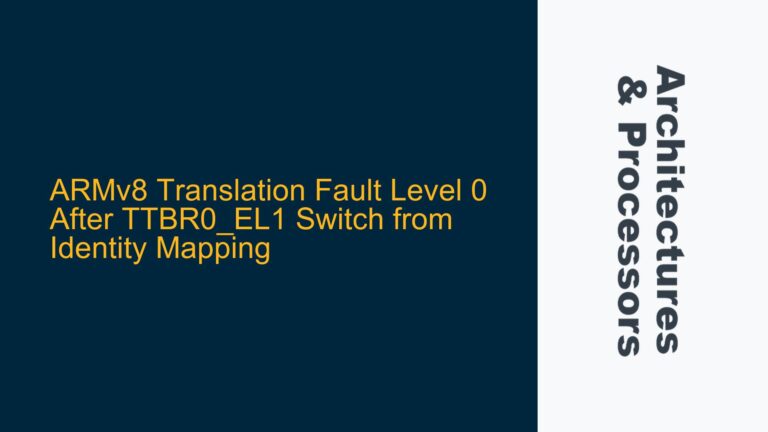ARM Cortex-A7 Shared L2 Cache Configuration and Real-Time Performance Optimization
The ARM Cortex-A7 processor, often used in dual-core configurations, is designed for energy efficiency and is commonly found in embedded systems requiring a balance between performance and power consumption. One of the key features of the Cortex-A7 is its shared L2 cache, which is typically 512KB in size. This shared cache architecture allows both cores to access a common pool of memory, reducing latency and improving overall system performance. However, in asymmetric multiprocessing (AMP) scenarios, where one core runs a real-time operating system (RTOS) and the other runs a general-purpose operating system like Linux, the shared L2 cache can become a source of contention, leading to unpredictable real-time response times.
In traditional ARM architectures, such as the Cortex-A9 with the PL310 L2 Cache Controller, cache partitioning and lockdown mechanisms are well-documented and can be configured to ensure deterministic behavior for real-time tasks. However, the Cortex-A7 does not use an external L2 cache controller like the PL310. Instead, the L2 cache logic is integrated directly into the processor cores, and the configuration options are implementation-specific. This lack of standardization and documentation poses a significant challenge for developers aiming to optimize real-time performance on the Cortex-A7.
The primary issue revolves around the inability to partition or lock down the shared L2 cache in a dual-core Cortex-A7 system. Without explicit control over cache allocation, the RTOS running on one core may experience unpredictable delays due to cache evictions caused by the Linux application running on the other core. This unpredictability is unacceptable in real-time systems, where deterministic response times are critical.
Implementation-Specific L2 Cache Behavior and Vendor Documentation Gaps
The Cortex-A7 Technical Reference Manual (TRM) provides limited information on the L2 cache configuration, stating that the behavior is implementation-specific. This means that the details of how the L2 cache is managed, including partitioning and lockdown capabilities, are determined by the SoC vendor. Unfortunately, many SoC vendors do not provide comprehensive documentation on these aspects, leaving developers to reverse-engineer the behavior or rely on trial and error.
In the case of the dual-core Cortex-A7 system in question, the SoC vendor has not provided any information on whether the L2 cache can be partitioned or locked down. This lack of documentation is a significant barrier to optimizing real-time performance. Without knowing the specifics of the L2 cache implementation, developers cannot make informed decisions about cache management strategies.
One possible reason for this documentation gap is that the Cortex-A7 is often used in cost-sensitive applications where the focus is on minimizing power consumption and silicon area. As a result, advanced cache management features like partitioning and lockdown may not have been a priority for the SoC vendor. However, this does not absolve the vendor of the responsibility to provide adequate documentation for developers who need to optimize their systems for real-time performance.
Another potential cause of the issue is the integration of the L2 cache logic directly into the Cortex-A7 cores. Unlike the Cortex-A9, which uses an external PL310 L2 Cache Controller, the Cortex-A7’s L2 cache is tightly coupled with the processor cores. This tight integration may limit the flexibility of cache management, making it more difficult to implement features like partitioning and lockdown. However, without detailed documentation from the SoC vendor, it is impossible to determine the exact limitations and capabilities of the L2 cache in a given implementation.
Strategies for Cache Management and Real-Time Performance Optimization
Given the challenges posed by the implementation-specific nature of the Cortex-A7’s L2 cache, developers must adopt a multi-faceted approach to optimize real-time performance. The following strategies can help mitigate the impact of cache contention and improve deterministic behavior in AMP systems.
First, developers should attempt to obtain detailed documentation from the SoC vendor regarding the L2 cache implementation. This documentation should include information on cache partitioning, lockdown capabilities, and any other cache management features that may be available. If the vendor is unable or unwilling to provide this information, developers may need to rely on experimentation and profiling to understand the cache behavior.
Second, developers can explore software-based cache management techniques to reduce the impact of cache contention. One approach is to use cache coloring, where the memory space is divided into different "colors" that map to specific cache sets. By carefully allocating memory to different cores based on these colors, developers can reduce the likelihood of cache conflicts. However, this approach requires a deep understanding of the cache architecture and may not be feasible in all cases.
Another software-based technique is to use cache prefetching and flushing to control the contents of the cache. By prefetching data that is likely to be used by the RTOS and flushing data that is no longer needed, developers can ensure that the RTOS has priority access to the cache. This approach requires careful tuning and may not be suitable for all workloads.
Third, developers can consider using hardware-based cache partitioning if it is supported by the SoC. Some Cortex-A7 implementations may provide limited support for cache partitioning through custom registers or control bits. If these features are available, developers can use them to allocate a portion of the L2 cache exclusively to the RTOS, ensuring deterministic access times. However, this approach requires detailed knowledge of the SoC’s cache architecture and may not be supported in all implementations.
Finally, developers should consider the overall system architecture and workload distribution when optimizing real-time performance. In some cases, it may be possible to offload certain tasks from the RTOS to the Linux core, reducing the demand on the L2 cache. Alternatively, developers can explore the use of dedicated hardware accelerators or coprocessors to handle specific tasks, further reducing the load on the Cortex-A7 cores.
In conclusion, optimizing real-time performance on a dual-core Cortex-A7 system with a shared L2 cache requires a combination of vendor documentation, software-based cache management techniques, and careful system design. While the implementation-specific nature of the Cortex-A7’s L2 cache presents significant challenges, developers can achieve deterministic behavior by adopting a systematic approach to cache management and performance optimization.






